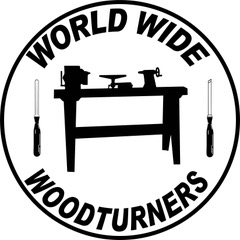… Continued from March 26, 2025
Choosing Safe Materials for Engraving: Wood and Beyond
Selecting the right material for laser engraving is just as important as choosing the correct machine settings. While wood is the most commonly used material for woodturners, laser engraving can also be applied to leather, acrylic, metal, glass, and more. However, not all materials are safe to engrave, and some may release toxic fumes, excessive smoke, or fine particulates that can be harmful to your health and damage your engraver.
Understanding which materials are safe, engrave well, and provide high-quality results will ensure a clean, precise, and safe engraving experience. Engraving the wrong material can lead to poor quality results, excess charring, or even fire hazards. In some cases, burning the wrong type of material can release dangerous gases like chlorine, cyanide, or formaldehyde, which require professional-grade ventilation to handle safely.
Best Woods for Laser Engraving
Wood remains one of the most popular and versatile materials for laser engraving, offering natural beauty, rich contrast, and a timeless aesthetic. However, not all woods perform the same under a laser. The best engraving results come from woods that are dry, have a consistent grain, and burn cleanly without excessive charring or smoke. Hardwoods generally produce sharper details, while some softwoods can engrave well but may burn unevenly due to their resin content.
Here are some of the best woods for laser engraving and what makes them great choices:
- Maple – Crisp, Clean Engraving: Maple is widely regarded as one of the best woods for laser engraving due to its fine grain and light color, which provides excellent contrast when burned.It’s ideal for engraving highly detailed patterns, logos, and text without excessive scorching.
- Produces sharp, high-resolution engravings.
- Minimal smoke and charring.
- Light wood color enhances contrast in the engraved areas.
- Cherry – Warm Tones & Rich Contrast: Cherry wood engraves beautifully, developing a deep, warm brown burn that makes designs stand out. It’s an excellent choice for decorative bowls, platters, and plaques.
- Provides darker burn marks that naturally contrast with the wood.
- Smooth grain allows for clean, detailed engraving.
- Slightly softer than maple, making it easier to engrave deeply.
- Walnut – Deep Contrast on a Dark Wood: Walnut is one of the darker hardwoods, and while it doesn’t offer the same light-to-dark contrast as maple or cherry, it provides a bold and elegant engraving effect.
- Naturally dark color means engravings appear more subtle and sophisticated.
- Best for logos, text, and bold patterns.
- Works well for engraved inlays when paired with lighter woods.
- Birch – Affordable and Versatile: Birch is a budget-friendly choice that still produces high quality engravings. It’s often used in signs, coasters, and decorative items.
- Engraves cleanly with moderate contrast.
- Less expensive than other hardwoods.
- Good for both deep engraving and light surface etching.
- Oak – Traditional & Durable: Oak is a dense hardwood with a distinct grain pattern, making it a classic choice for woodturners. It can handle deep engraving without losing detail, though its strong grain pattern may slightly affect intricate designs.
- Great for large-scale designs and bold
lettering. - Works well for engraved textures and deep
reliefs. - Best for rustic or traditional-style
engravings.
- Great for large-scale designs and bold
To be continued in April 23, 2025 Newsletter
